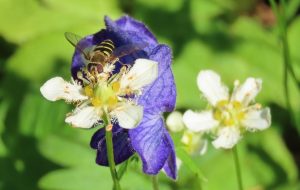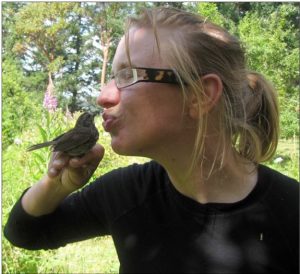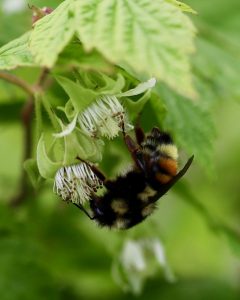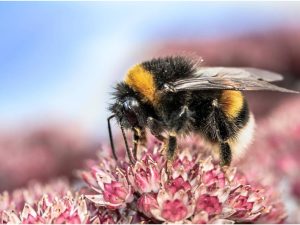Back in March 2022, Aija White presented to the Bulkley Valley Naturalists on the 2021 results of her PhD research on plant pollinators in agricultural settings across the Bulkley – Nechako Region, and how they, and we, might adapt to maintain these vital connections within our food and ecological support systems as the climate changes.
For those who are interested in learning more about the important plant pollinators that inhabit our region, and how we can adapt our landscapes, croplands and home gardens to make them more hospitable to pollinators as our climate changes, there are now several informative reports available.
- Summary Brochure: What’s Pollinating Crops in BC’s Central Interior
Did you know that there are over 200 species of insects and spiders that we depend upon to pollinate our crops in the Bulkley-Nechako Region? Among them are at least 63 species of pollinating bees, over 60 species of hover flies, and at least 30 different types of pollinating moths and butterflies?

Hover (Syrphid) fly pollinating Fringed Grass-of-Parnassus (Parnassia fimbriata). Bonnie Jungclaus photo
2. Pollinator Assessment and Agricultural Crop/Climate Analysis
This 82-page report by Aija and her UNBC supervisor Dezene Huber provides a comprehensive review of what is known about how pollinators are responding to climate change, full details on the 2021 results of field sampling from Telkwa to the Robson Valley, and many links and publications to assist in pollinator habitat enhancement.
3. Selecting Plants for Pollinators in the Fraser Plateau (and Bulkley Valley)
This 2019 publication from Pollinator Partnership Canada provides detailed guidelines tailored to BC’s central Interior describing how to enhance pollinator habitat in your home garden, farm property or neighbourhood, with contributions from our local bee guru Lynn Westcott.



